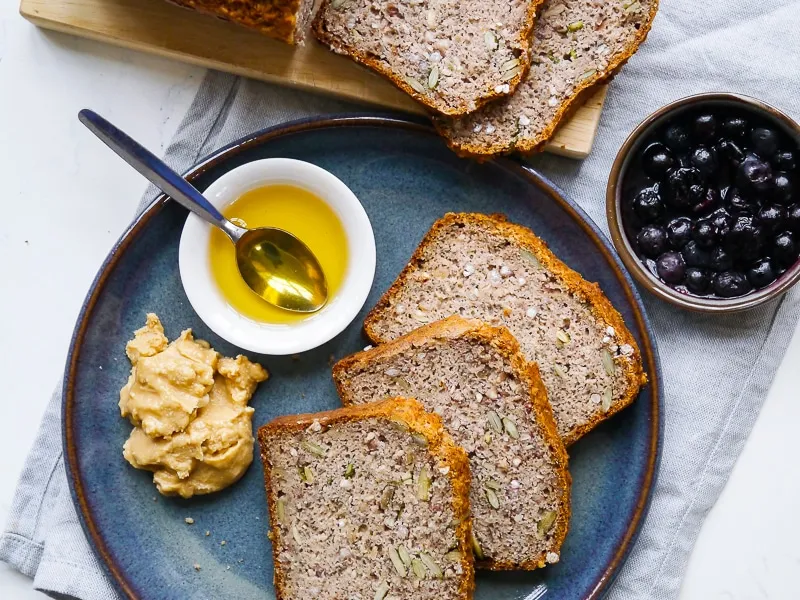Looking for a delicious Bison Steak recipe? Try this simple and flavorful recipe that will impress your taste buds.
Bison meat is lean and rich in flavor, making it a great alternative to traditional beef steak. By following these easy steps, you can create a mouthwatering bison steak that is sure to be a hit at your next meal.
Start by marinating the bison steak in a mixture of olive oil, garlic, salt, and pepper for at least 30 minutes. Then, grill the steak to your desired doneness, and let it rest before serving. The result is a juicy and tender bison steak that is perfect for any occasion. Serve with your favorite sides and enjoy a delicious meal that is both healthy and satisfying.

Table of Contents
ToggleExploring Bison Meat
Bison meat is a lean and flavorful protein source that has been gaining popularity as a healthier alternative to traditional beef. Exploring bison meat can lead to discovering its exceptional nutritional value and learning about reliable sources for purchasing it.
Nutritional Value Of Bison Meat
Bison meat is renowned for its high nutritional content, boasting low saturated fat and cholesterol, which contributes to heart health. It is a rich source of protein, iron, and B vitamins, making it an excellent choice for those seeking a nutrient-dense diet. With fewer calories and less fat than beef, bison meat provides a healthier option without compromising on taste.
Sourcing Bison Meat
When sourcing bison meat, it’s crucial to ensure that the product is ethically and sustainably raised. Look for suppliers that offer grass-fed and hormone-free bison, as this guarantees a higher quality and more natural flavor. Many local farms and specialty meat providers carry bison meat, and it’s also possible to find online retailers that ship directly to consumers.
Preparing Bison Steak
When it comes to preparing bison steak, it’s important to start with the right cut of meat and use the appropriate seasonings to enhance its natural flavor. Cooking bison steak requires a different approach compared to beef, but with the right techniques, you can create a delicious and tender dish that will impress your family and friends.
Selecting The Right Cut Of Bison Meat
Choosing the right cut of bison meat is crucial for a successful bison steak recipe. Opt for lean cuts such as filet mignon, ribeye, or top sirloin for a tender and flavorful result.
Consider selecting grass-fed bison for a richer taste and nutritional benefits.
Marinades And Seasonings For Bison Steak
Marinating bison steak can enhance its flavor and juiciness. Use simple marinades with natural ingredients like olive oil, garlic, and fresh herbs to complement the natural taste of the meat.
When seasoning bison steak, avoid heavy marinades or overpowering spices that can mask the subtle flavors of the meat.
Cooking Methods For Bison Steak
When cooking bison steak, avoid overcooking to maintain its tenderness and juiciness. Opt for grilling or pan-searing methods for best results.
Remember to let the bison steak rest after cooking to lock in the juices and ensure perfect doneness.

Serving Bison Steak
When serving Bison Steak, it’s essential to complement its robust flavor with well-chosen sides and attractive presentation. To elevate your Bison Steak dining experience, consider the following tips:
Pairing Bison Steak With Sides
- Opt for fresh roasted vegetables or a crisp salad to balance the richness of Bison Steak.
- Include garlic mashed potatoes or wild rice for a hearty and satisfying meal.
- Consider serving Bison Steak with grilled asparagus or steamed broccoli for a nutritious twist.
Garnishing And Presentation Tips
- Add a sprig of fresh herbs like thyme or rosemary to enhance the visual appeal of the dish.
- Drizzle a balsamic glaze or red wine reduction over the Bison Steak for a touch of elegance.
- Arrange the steak slices on the plate in a fan shape for a restaurant-worthy presentation.
Health Benefits Of Bison Meat
Bison meat is not only a delectable culinary choice but also boasts a slew of health benefits. The nutritional profile of bison meat makes it an excellent option for those looking to maintain a healthy diet without compromising on taste.
Lower Fat Content Compared To Beef
Bison meat is renowned for its significantly lower fat content compared to beef, making it an ideal option for individuals seeking a leaner protein source. With a fat content that is approximately half that of beef, bison meat provides a healthier alternative without sacrificing flavor.
Rich In Protein And Essential Nutrients
Not only is bison meat lower in fat, but it is also rich in protein and essential nutrients. A 3-ounce serving of bison steak provides around 22 grams of protein, supporting muscle growth and repair. Additionally, bison meat is packed with iron, zinc, and vitamin B12, all of which are crucial for maintaining overall health.
Conclusion & Final Tips
If you’ve never tried bison meat before, you’re in for a treat. Bison meat offers a distinctive flavor that is rich, lean, and slightly sweet. It’s a taste that sets it apart from other types of meat and makes it an exciting ingredient to work with. The unique flavor of bison is a result of the animal’s diet, which primarily consists of grass and other native vegetation. This natural diet contributes to the earthy and robust flavor profile that bison is known for.
Bison meat can be prepared in various ways, but it truly shines when cooked to medium-rare or medium at most. Overcooking bison can result in a tougher texture and a loss of its natural juiciness. Whether you’re grilling, pan-searing, or slow-cooking, be sure to keep an eye on the cooking time and internal temperature to achieve optimum flavor and tenderness.
Properly storing bison meat is essential to maintain its quality and freshness. When storing raw bison in the refrigerator, make sure it is tightly wrapped in plastic or placed in an airtight container to prevent exposure to air. This helps prevent the meat from drying out and also helps avoid any cross-contamination with other foods.
If you plan on freezing bison meat for an extended period, consider packaging it in airtight freezer bags or vacuum-sealed pouches. Freezing in smaller portions allows for easy thawing and reduces the risk of freezer burn. When thawing frozen bison, always do so in the refrigerator overnight or under cold running water. Avoid thawing at room temperature to minimize the growth of harmful bacteria.
When it comes to reheating cooked bison, it’s important to do so gently to preserve its tenderness. Seared bison steaks can be reheated in a preheated oven at a low temperature to keep them juicy and flavorful. For bison stews or roasts, reheating in a pot on the stovetop over low heat is recommended.
Remember, bison meat is a delicacy that deserves to be treated with care and respect. By appreciating its unique flavor and following proper storage and reheating suggestions, you can enjoy bison in all its glory.
Frequently Asked Questions On (Bison Steak Recipe)
How Do You Cook Bison Steak?
Cook bison steak on a preheated grill or stove for 3-4 minutes per side for medium-rare doneness.
Is Bison Steak Healthier Than Beef?
Bison steak is leaner than beef, lower in calories, and saturated fat, and higher in protein, making it a healthier choice.
Where Can I Buy Bison Steak?
You can buy bison steak from specialty meat markets, online stores, or directly from bison ranchers in your area.
What Does Bison Steak Taste Like?
Bison steak has a rich and slightly sweet flavor, similar to beef but with a slightly earthy undertone.
Conclusion
Incorporate our bison steak recipe into your cooking repertoire for a flavorsome and nutritious meal. Experimenting with new ingredients opens up a world of culinary possibilities. Don’t hesitate to modify the recipe to suit your preferences. We hope this dish becomes a staple in your kitchen and brings joy to your dining table.











